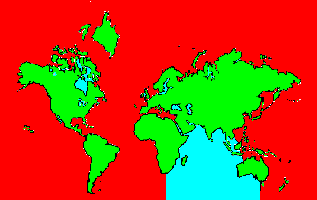SPECIES INFO
School shark or tope (Galeorhinus galeus) is found along the coasts of southern Australia and also Tasmania. It is also found near California. It is found from Eduador south through Chile. In the Atlantic Ocean it is found from southern Brazil along the coast of Argentina. In the northern Atlantic Ocean it is found from Scandinavia south to western Africa, and then again from Angola to the Cape. It is also found in the Mediterranean. This shark reaches about 6 or 7 feet in length. The larger dorsal fin is separated widely from the much smaller second dorsal fin. The pectoral fin is longer than the height of the larger dorsal fin.
It is pictured in Kuiter's Coastal Fishes of SE Australia. There is an excellent drawing on page 15 of the Diamond handbook on fishes of Britain and Europe by Nichols and Miller.Smooth Hounds or Smooth Dogfishes (Triakidae Family) are a group of small sharks that are frequently placed in the Carcharhinidae family. There are about 42 species in the Triakidae family. The following are included in this family:
Gray Smoothhound - Mustelus californicus - East Pacific
Smooth Dogfish - Mustelus canis - Western Atlantic
Brown Smoothhound - Mustelus henlei - East Pacific
Sicklefin smoothhnd - Mustelus lunulaus - East Pacific
Florida Smoothhound - Mustelus norrisi - Near Florida
Spotted Shark - Mustelus punctulatus - East Atlantic
Leopard Shark - Triakis semifasciatus - East Pacific
Banded Houndshark - Triakis scyllia - Japan and China
This large order contains the catsharks, the houndsharks, the requiem sharks, and the hammerhead sharks. This large order contains about 225 species divided into about 8 families.
Sharks and rays (Elasmobranchi), cartilaginous fishes, deserve to be a class separate from the normal fish, in that they do not have a bone skeleton but rather a cartilage skeleton.
Fertilization is internal in this class which also separates them from the bony fish class. Although there are a few fresh water species, the majority of the species in this class are found in salt water. As of 2005, there were about 500 known species of sharks and about 600 known species of rays.
David Ebert, author of a recent book on sharks, rays, and chimaeras of California, counts a total of 988 described species in the class with about 150 additional species awaiting scientific description. He breaks down the described species to 410 species of sharks, 543 species of rays, and 35 species of chimaeras.
Many species of sharks face an uncertain future, as the Chinese purchase shark fins to make shark fin soup. It was estimated that 100 milllion sharks are killed each year for this purpose. However, recent estimates indicate the Chinese are reducing their consumption of this exotic soup.
Backboned Animals (Phylum Chordata) are the most advanced group of animals on earth. These animals are characterized by having a spinal cord or backbone. Most members have a clearly defined brain that controls the organism through a spinal cord. Fish, amphibians, reptiles, birds, and mammals are in this phylum.
Currently, some taxonomists believe that the fish should be divided into two groups (sharks and regular fishes) and that there are some other primitive groups in the phylum such as hagfish or lampreys.
Animal Kingdom contains numerous organisms that feed on other animals or plants. Included in the animal kingdom are the lower marine invertebrates such as sponges and corals, the jointed legged animals such as insects and spiders, and the backboned animals such as fish, amphibians, reptiles, birds, and mammals.

